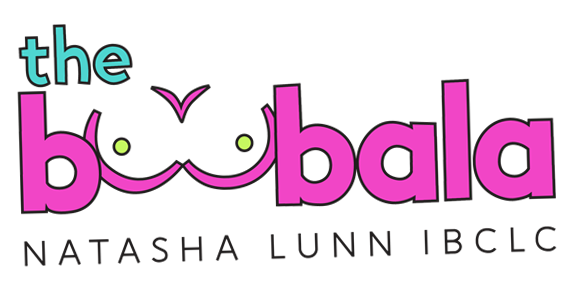Page Content
- What do protruding nipples look like?
- What should normal breastfeeding nipples look like?
- When should I be worried about nipples?
- Are bumps on nipples normal?
- What do damaged nipples look like breastfeeding?
- What does a good latch look like?
- What do healthy breast nipples look like?
- How do you know if your nipples are good for breastfeeding?
- When should I worry about my nipples?
- What do nipples look like with a bad latch?
Understanding Normal Nipples for Breastfeeding
When it comes to breastfeeding, the anatomy of the nipple plays a crucial role in the process. Normal nipples for breastfeeding can vary widely among individuals, but they generally share some common characteristics that facilitate effective nursing.
At the center of the breast lies the nipple, which is connected to the mammary glands responsible for milk production. Surrounding the nipple is the areola, the darker area that can vary in size and color among different women. This structure is not just for aesthetics; it serves a functional purpose by helping the baby latch on effectively during breastfeeding.
Types of Nipples
Nipples can be classified into several types, including protruding, flat, and inverted. Protruding nipples are typically the most common and are generally easier for infants to latch onto. Flat nipples, which sit flush against the breast tissue, may require additional techniques to assist the baby in breastfeeding. Inverted nipples, which retract below the surface, can present challenges but are not insurmountable. Many mothers with inverted or flat nipples successfully breastfeed with the right support and techniques.
Challenges and Considerations
While many women experience no issues, some may face challenges such as sore or cracked nipples, which are among the leading reasons mothers discontinue breastfeeding. These issues can arise from improper latching, positioning, or even infections like mastitis, which can occur due to blocked milk ducts. It’s essential for breastfeeding mothers to seek help if they encounter pain, as proper guidance can often resolve these problems and improve the breastfeeding experience.
The Importance of Support
Support from healthcare providers, lactation consultants, and peer groups can be invaluable for new mothers. They can provide techniques for achieving a proper latch, which is crucial for preventing nipple pain and ensuring that the baby is feeding effectively. Understanding that variations in nipple shape and size are normal can also help alleviate concerns for new mothers.
In conclusion, normal nipples for breastfeeding encompass a range of shapes and sizes, each capable of supporting the breastfeeding journey with the right knowledge and support. Emphasizing the importance of proper technique and seeking assistance when needed can make a significant difference in the breastfeeding experience for mothers and their infants.
What do protruding nipples look like?
For many people, protruding nipples are raised above the areola (the darker skin surrounding the nipple) all the time. The nipples can harden and stick out even further in response to cold, physical stimulation, or sexual arousal.
What should normal breastfeeding nipples look like?
Your nipple should be round after a feed. If it is lipstick-shaped or flat, this may indicate that baby may not have had a full mouthful of your breast.
When should I be worried about nipples?
Skin changes of the nipple
The skin of the nipple can become red and scaly or crusted, or it may thicken. These can be important signs of a types of breast cancer, particularly Paget disease.
Are bumps on nipples normal?
Bumps can be a normal part of your nipples.
Areolas can vary in shape, size, and color depending on the person. “[Areolas] contain small, sensitive bumps called Montgomery’s glands, which secrete a fluid that keeps the nipples lubricated,” explains Dr. Aliabadi. So bumps are kinda part of the anatomy.
What do damaged nipples look like breastfeeding?
A nipple fissure can happen to one or both breasts, and it may cause the nipple to be red, sore, dry, and chafed. The condition is often temporary and not severe, but it can make breastfeeding very uncomfortable as your baby latches on and sucks. If it gets worse, your nipples may bleed or develop sores or scabbing.
What does a good latch look like?
Be sure to guide them to the sandwich chin-first. As they latch on, their tongue should stick out a bit, cover their lower gum and partially envelop the breast. Their lips should turn outward like a fish and press against your breast.
What do healthy breast nipples look like?
Just like with breasts, there’s no one way that nipples are supposed to look. Both nipples and areolas (the circular skin around your nipple) come in different sizes and colors, from light pink to brownish black. The color of your nipples usually relates to your skin color.
How do you know if your nipples are good for breastfeeding?
Look at your nipple after breastfeeding, if it looks blanched or pinched, review the latch and positioning tips to see if you can find adjustments to make. The nipple should look the same way it did before breastfeeding, neither pinched nor blanched.
When should I worry about my nipples?
If you experience prolonged soreness that’s accompanied by a lump or nipple discharge, contact your healthcare provider right away.
What do nipples look like with a bad latch?
If your baby is not latched properly, you may notice a crease across the tip of your nipple when it comes out of your baby’s mouth. It may be shaped like a new tube of lipstick. Or it may look white at the tip.

